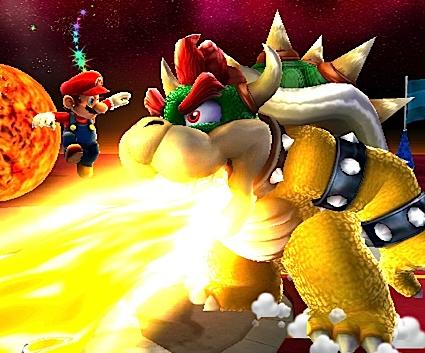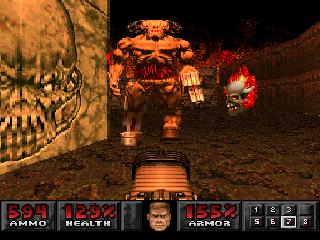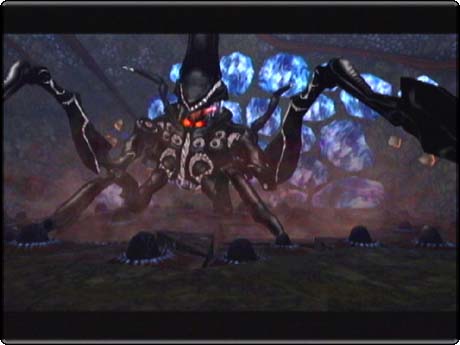Boss fights rank among the most unforgettable moments in video games. Ask any gamer and they will vividly recall Liquid Snake’s seeming inability to die in Metal Gear Solid, or besting Ganon with the silver arrow in The Legend of Zelda.
It’s easy to see why these climatic battles engender such nostalgia. Boss fights are usually one of the last things players experience in a game, and therefore they last long in the memory. If the clash is epic, satisfying and challenging then players will surely fondly remember both the fight and the game as a whole. On the other hand, if the final fight is lackluster then the game will forever carry the stigma of an unsatisfying conclusion, regardless of the game’s quality.
The inclusion of a great boss battle is not a prerequisite for a great video game. In fact, many terrific games feature lackluster final boss fights. At the end of Half-Life you fought what can only be described as a giant space baby. It’s one of the game’s low points, even though every other area excels. The same phenomenon occurs in the wearisome simplicity of the final Bowser battle in Super Mario Galaxy.

It may look fiery, but Super Mario Galaxy’s final fight was more of a blowout.
These examples show that even the most talented developers find creating compelling boss fights difficult. While boss fights are hardly necessary for a meaningful game playing experience, they are nonetheless something that developers should strive to achieve considering the tremendous amount of excitement and character they add to most titles. So, what are the elements needed for a boss fight to be effective?
Before delving into the intricacies of effective boss battles, it’s imperative to set a standard by which to measure the following criteria. Where in all of video game history can the best final boss battle be found? There are numerous examples of excellent boss fights, but the one I’ll use to illustrate the following points is the final boss of Metroid Prime: the mutated space creature of the same name.
Difficulty
Ideally each successive boss should be more difficult to defeat than its predecessor. Not following this formula yields an uneven playing experience, a mistake exhibited in the original Doom. The boss at the end of the second episode was the Cyberdemon, a rocket-launching, tough-as-nails monstrosity that could kill the player in one hit. Compare this with the final boss of the third episode, the Spider Mastermind. Even outwardly, a giant mechanical spider with a machine gun fails to stack up against the Cyberdemon. This notion is further evinced by the Spider Mastermind being significantly weaker than its predecessor. Also, the BFG was not available until the third episode, meaning the player had to defeat the Cyberdemon with the rocket launcher – it took twenty rockets to fell the beast! Contrastingly, the Spider Mastermind met its end after only three BFG blasts.

The Cyberdemon proved far more challenging than his successor
In Metroid Prime, the boss battles begin relatively easy. It isn’t until the Omega Pirate boss that the fights really began to get tricky. Appropriately, the developers notched the difficult up with the next boss, Meta Ridley, and the game climaxed with the most difficult contest of all, Metroid Prime.
Metroid Prime’s final fight is challenging on several levels. Much like the Cyberdemon fight in Doom, the battle with the eponymous Metroid Prime takes place in a location that inhibits the player’s movement from the off. For the first part of the fight, it’s pretty much the player facing the gigantic Metroid Prime within a series of long, narrow caves. These tight arenas make avoiding Metroid Prime’s constant projectiles more difficult to avoid than they would be in a large, open area. Likewise, the player cannot readily dodge the creature when it charges. To avoid this attack, the player must instead pay close attention to the idiosyncrasies of the cave.
Furthermore, the Metroid Prime fight presents a challenge because it requires the player to identify the creature’s weaknesses and then exploit those weaknesses by firing upon a small area. As the creature changes colors, the player must recognize which of Samus Aran’s weapons to use. If the player did not bother to search and obtain the upgrades for Samus’s weapons then the fight becomes significantly more difficult. In short, the game’s developers made even the act of damaging the creature a challenging proposition in itself. Compare this with the simple execution of the Spider Mastermind.
Comprehensive
The final boss fight should test all the knowledge and skills garnered throughout the course of the game. To defeat Metroid Prime, the player must utilize all of Samus Aran’s weapons, visors, and other abilities acquired during the quest. As previously mentioned, the Metroid Prime battle is made easier if the player took the time to discover all the weapon upgrades and energy tanks hidden throughout Tallon IV. A good parallel is found in the the final encounter with GLaDOS in Portal, which requires a good understanding of the mechanics and capabilities of the portal gun.
.jpg)
GLaDOS is one of the most memorable video game bosses of recent years.
As the above examples illustrate, the final boss fight should seek to mimic an Advanced Placement examination. A yearlong high school AP class is ultimately meant to prepare students for the one, final climatic showdown. Simply replace the examination booklet with a hellish brute and you have an effective approximation in the video game world.
Many games fail to follow this rule. In Resident Evil 4, no special knowledge is needed to defeat Saddler at the end; all the player must do is equip Leon’s best weapon and blast away at the monster’s eyeballs which may as well be marked with a huge red target. If the player is lucky enough to go into the boss fight with a rocket launcher, then only one hit is needed to cripple the foe. The general rule of thumb is that if players can beat the final boss with more or less the same inventory and capabilities that they had at the beginning of the game, then the encounter is not a climatic as it truly could be.
Epic
This final encounter should be a zenith that validates the struggle it took to reach it. At the end of the fray, players should really feel like they went to hell and back and yet somehow emerged victorious. The final fight with Metroid Prime is an apt marathon, as the player must defeat two forms of the creature: the heavily armored, weapon-bearing outer shell followed by the core of the Metroid. Similarly, it takes a lengthy amount of time to fight through all of Lavos’s forms at the end of Chrono Trigger: the outer shell, Lavos, and then the Lavos Core.
The antithesis of this is the final boss battle in Quake. While the ultimate foe, Shub-Niggurath, looked intimidating, in reality it perhaps represented the biggest straw man in video game history. All players had to do to defeat this massive, inert entity was teleport into it. The only creatures players really fought during this experience were numerous Shamblers and other common monsters that they had encountered on countless occasions prior to this final engagement. Could this fight have been any less epic?
Suspense and Stakes
When there’s something at stake, such as the fate of the world, it can make the final battle much more climatic and immersive Closely incorporating the villain’s motivations into the game’s story is one way to accomplish such an engagement. Pious Augustus, the chief villain of Eternal Darkness: Sanity’s Requiem, torments the player throughout the game. As such, the player comes to really despise Augustus. In the final battle with the undead Roman, no less than the fate of the entire world is at stake. Furthermore, the fight is emotionally satisfying story-wise as the player gets to finally bring Augustus to justice for his brutish actions and malicious motivations.

Metroid Prime: a fitting way to close a great game.
The final boss battle can also immerse the player through the use of mystery and suspense. Throughout Metroid Prime, players read logs referring to the foe they will finally face. Through these, the player becomes truly curious as to the true nature of Metroid Prime. The final confrontation is fulfilling then not only because of its action-packed nature but also because it satisfies this curiosity.
The same can be said with GLaDOS in Portal. The cybernetic entity taunts the player through the entire game. As the game progresses and players comes closer to finally meeting GLaDOs in the final encounter, the curiosity surrounding the being’s true nature takes anticipation to peak levels.
The fight at the end of Chrono Trigger with Lavos is a fine example of stakes and suspense working together. The game’s characters talk at length about Lavos, and the player even gets to see it in brief flashes. Yet, the full nature of the threat is not revealed until the final confrontation. Add to this that the fate of the entire world rests on Lavos’s defeat, and the end result is a boss fight for the ages.
In the Eye of the Beholder
Some games succeed in one of these areas but fail in others. BioShock’s final boss encounter felt emotionally fulfilling, yet it largely failed on the difficulty factor. The final fight with Liquid Snake in Metal Gear Solid was suitably epic and fairly difficult, yet it failed regards what was at stake; once Solid Snake destroyed Metal Gear Rex, was there any real compelling reason to keep fighting? I suppose if you were really invested into Solid Snake as a character, an iffy proposition itself at best.
The idea of the perfect boss fight is largely in the eye of the beholder. After all, what might be epic or difficult for one player may be pedestrian and unproblematic for another. Yet, I enumerate the above traits with the hope that players and developers alike will identify and expand upon them. A final boss fight is meant to be a point of culmination in which all the player’s skills are put to a final test. Considering this, it is only fitting that such fights reflect the quality of all the material that preceded them. Developers owe it to both the player and themselves to create compelling, epic boss fights to appropriately end the entertainment of their games. Such a battle is what successfully makes a great game truly unforgettable.
”